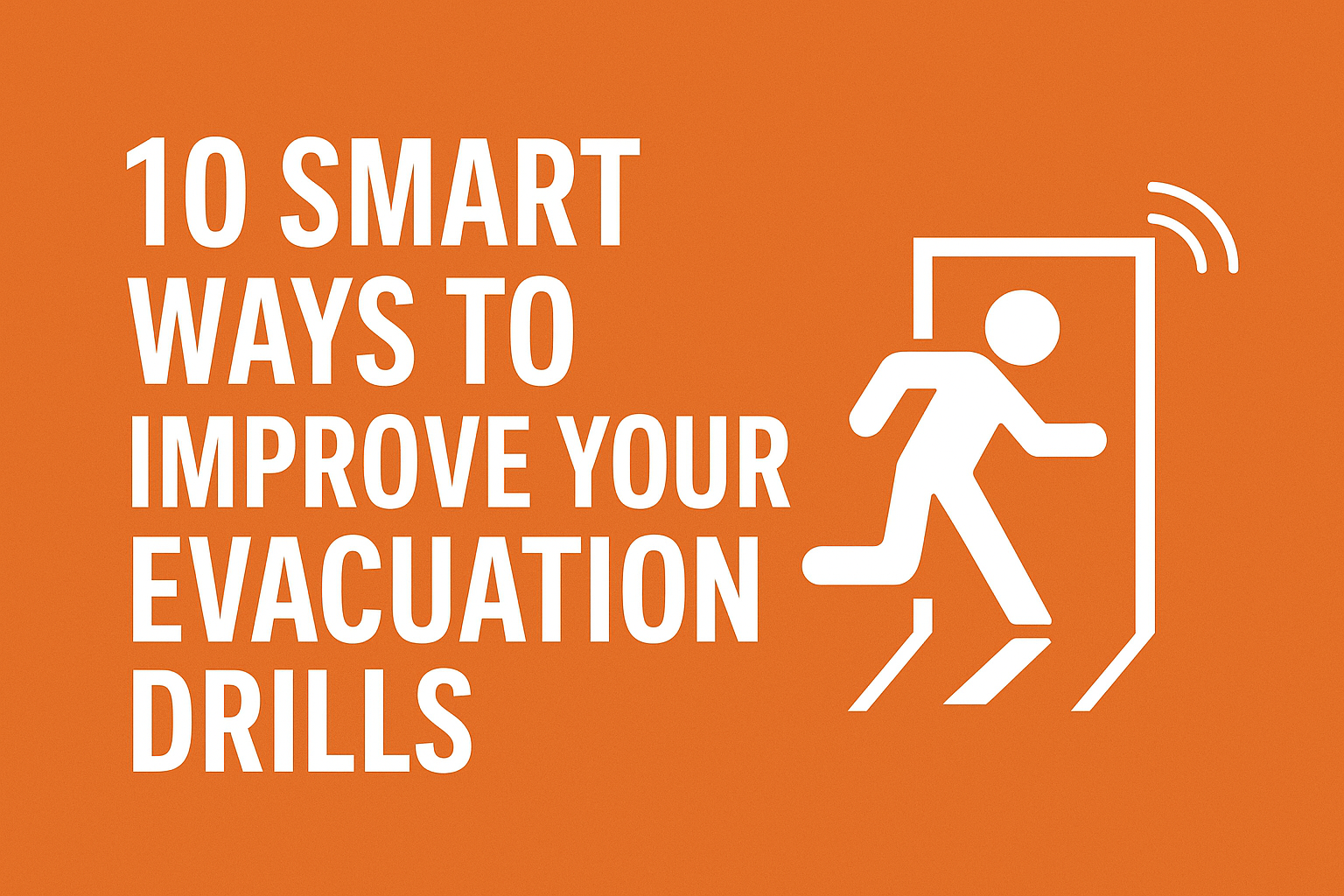Improve Your Evacuation Drills to ensure your employees can act swiftly, calmly, and correctly when disaster strikes. Whether the threat is fire, chemical spill, explosion, or natural disaster, the time to prepare is before an emergency happens.

- Improve Your Evacuation Drills
- 1. Tailor the Drill to Realistic Scenarios
- 2. Train Evacuation Leaders Thoroughly
- 3. Clearly Mark All Evacuation Routes
- 4. Practice During Different Conditions
- 5. Include Everyone—Even Visitors and Contractors
- 6. Simulate Communication Failures
- 7. Use Technology to Enhance Accuracy
- 8. Debrief and Get Employee Feedback
- 9. Post Visual Aids in Common Areas
- 10. Track, Review, and Repeat Regularly
Improve Your Evacuation Drills
A well-practiced evacuation plan saves lives, reduces injuries, and improves emergency response efficiency.
Here are 10 smart, actionable strategies to make your workplace evacuation drills more effective and realistic.
1. Tailor the Drill to Realistic Scenarios
Don’t run the same basic fire drill every time. Incorporate a range of emergencies—chemical leaks, electrical fires, earthquakes, or even intruder alerts.
Vary the blocked exits or introduce time pressures. Drills that feel real drive real preparedness.
📘 External link: Review scenario planning advice at Ready.gov (DoFollow)
2. Train Evacuation Leaders Thoroughly
Assign and train evacuation marshals or floor wardens. They should know all exits, headcounts, disability assistance protocols, and communication procedures. Empower them with hi-vis vests and two-way radios for clear leadership during chaos.
🛠 Internal link: Learn about The Vital Role of Initial Incident Responders in Workplace Safety.
3. Clearly Mark All Evacuation Routes
Ensure all exits, stairwells, and muster points are clearly marked with lit, multilingual signs. Maps should be posted in hallways and meeting rooms. Blocked or poorly marked paths delay escape and endanger lives.

4. Practice During Different Conditions
Don’t always schedule drills on sunny Tuesday mornings. Try conducting a drill in the rain, during night shifts, or while key staff are off duty. Emergencies are unpredictable—your drills should be, too.
5. Include Everyone—Even Visitors and Contractors
Drills should include everyone in the facility. Visitors, cleaners, and temporary workers must be aware of procedures. Provide orientation and ensure muster point supervisors check all individuals are accounted for.
📘 External link: Review emergency compliance for contractors at CCOHS. (DoFollow)
6. Simulate Communication Failures
Turn off alarms or simulate a power outage during the drill. Can your team still coordinate using backup tools—radios, air horns, or verbal instructions? This tests real-world resilience under pressure.
7. Use Technology to Enhance Accuracy
Digital tools like headcount apps, smart badges, and tablet-based muster check-ins can speed up accountability. Analyze time-to-evacuate metrics and identify bottlenecks with data, not guesswork.
8. Debrief and Get Employee Feedback
Immediately after the drill, hold a debrief session. What went well? What didn’t? Use anonymous surveys or toolbox talks to capture frontline insights. Improvement comes from feedback, not finger-pointing.
🛠 Internal link: Read Creating Accountability Without Blame in Safety Programs.
9. Post Visual Aids in Common Areas
Posters showing exit routes, alarm sounds, or color-coded emergency responses (e.g., fire = red, chemical = yellow) reinforce memory.
Quick-reference charts in breakrooms and washrooms help staff remember under pressure.
10. Track, Review, and Repeat Regularly
Keep drill records: date, duration, participants, observations, and corrective actions. Revisit the plan every 6–12 months and after any facility changes. Improvement is a cycle—never a one-time task.

📘 External link: View audit-ready templates at OHSE.ca. (DoFollow)
To truly improve your evacuation drills, you need to move beyond routine. By introducing unpredictability, ensuring inclusion, leveraging tech, and listening to your team, you transform a checklist task into a powerful life-saving exercise.
Evacuation drills aren’t just compliance—they’re commitment. Make every drill count.

No comments yet